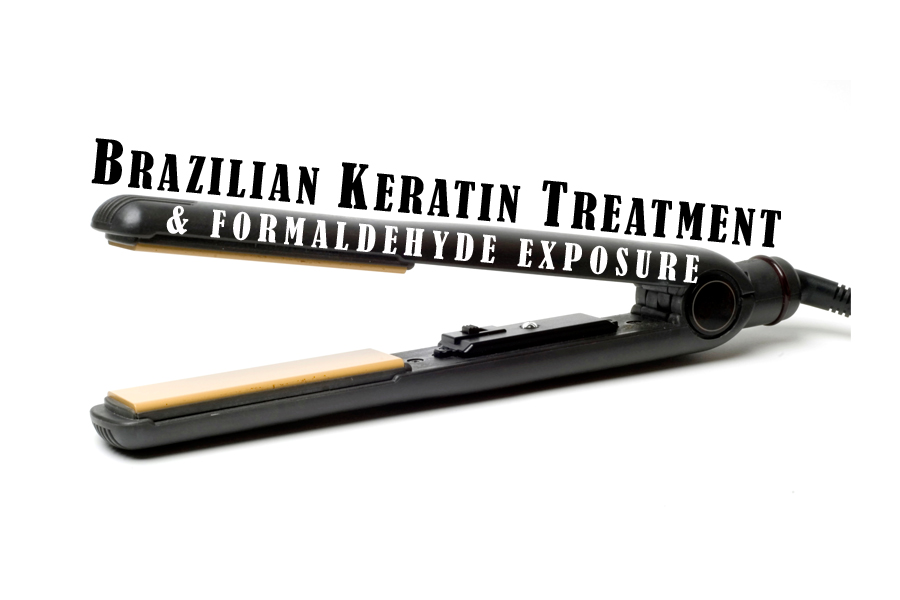Steve Tcherkezian is a BKT and Japanese Hair Straightening Specialist at Nouveau Hair Gallery in Toronto, Canada. He currently uses our Model SS-300-BKT Fume Extractor to help reduce fume exposure while performing hair treatments on clients: “Hey, my name is Steve Tcherkezian. I am in Toronto, Canada. I specialize in the Brazilian/BKT and Japanese Hair… Learn More
Category: Industry Applications
Learn more about Sentry Air System’s influence in different applications, such as: Welding, Soldering, Laboratories, and much more.
Nail Salon Respiratory Safety
According to the Environmental Protection Agency, one of the most effective ways to help prevent inhalation of dangerous fumes and particulate in a nail salon is to install local exhaust ventilation: “Install a local exhaust ventilation system near work tables. Since the general heating, ventilating, and air-conditioning systems (HVACs) slowly exchange the air inside the… Learn More
The Hazards of Formaldehyde Fumes
Formaldehyde is a useful chemical that is used in many manufacturing processes and in day-to-day life. It also poses a danger because of its toxic and carcinogenic properties and as such should be handled safely. Formaldehyde is a volatile organic compound (VOC) with a strong and distinctive odor that can be found in a clear… Learn More
The Hazards of Solder Fumes
Updated May 3, 2024 Soldering is a process in which heat is used to join two metals together by melting a third metal or solder. This process can produce fumes or solder smoke that can be hazardous to the operator. Depending on the application and particular solder, there is a wide variety of health concerns… Learn More
New OSHA Hexavalent Chromium Requirement
The Occupational Safety & Health Administration (OSHA) released a press release on Friday, May 21st, regarding hexavalent chromium and worker knowledge of exposure. May 31st already marks the deadline for executing proper engineering controls related to worker exposure to hexavalent chromium (Click Here for information regarding this standard), and now June 15, 2010 marks another… Learn More
Sentry Air Systems Case Study: MEK Fume Removal
Methyl Ethyl Ketone Fumes: Methyl Ethyl Ketone, also known as MEK and butanone, is one of the most prevalent ketone compounds and is used in a wide variety of applications. It is primarily produced industrially on a large scale from 2-butanol. MEK is a popular solvent and dissolves many materials. It is frequently used to… Learn More
Hazards of Epoxy Fumes
What is Epoxy? Epoxy, also known as polyepoxide or an epoxy resin system, is the combination of epoxy resin and a curing agent (also called a catalyst or hardener). Common applications include bonding adhesive, paints and coatings, primers and sealers, patching and resurfacing, flooring, chemical containment, wood repairs, electrical applications, composite materials, marine applications, aerospace… Learn More
Portable Clean Room Hoods for Data Recovery

Data recovery is a very sensitive application. As a result, this “surgery” needs to be performed in a very clean and sterile environment. For those engaged in data recovery, it is essential to keep tiny micro-sized particles away from the open hard disks drives. If dust enters this equipment the damage can be extremely costly,… Learn More
Brazilian Keratin Treatment: Health Risks and a Safety Recommendation

The Brazilian Keratin Treatment is a hair-straightening process that promises straight, smoother, and shinier hair that can last anywhere from six weeks to a few months. This process can take up to four hours and includes multiple steps. According to salontoday.com[1], researchers in Brazil discovered this treatment more than 10 years ago and because of… Learn More
The Hazards of Welding Smoke
The Hazards of Welding Smoke & Devices Used to Reduce Exposure Description of welding and welding smoke Welding is a process that joins two materials by melting the pieces and adding a filler material to form a strong joint when cooled. More specifically, arc welding maintains an electric arc between an electrode and the material… Learn More

 Made in the USA
Made in the USA